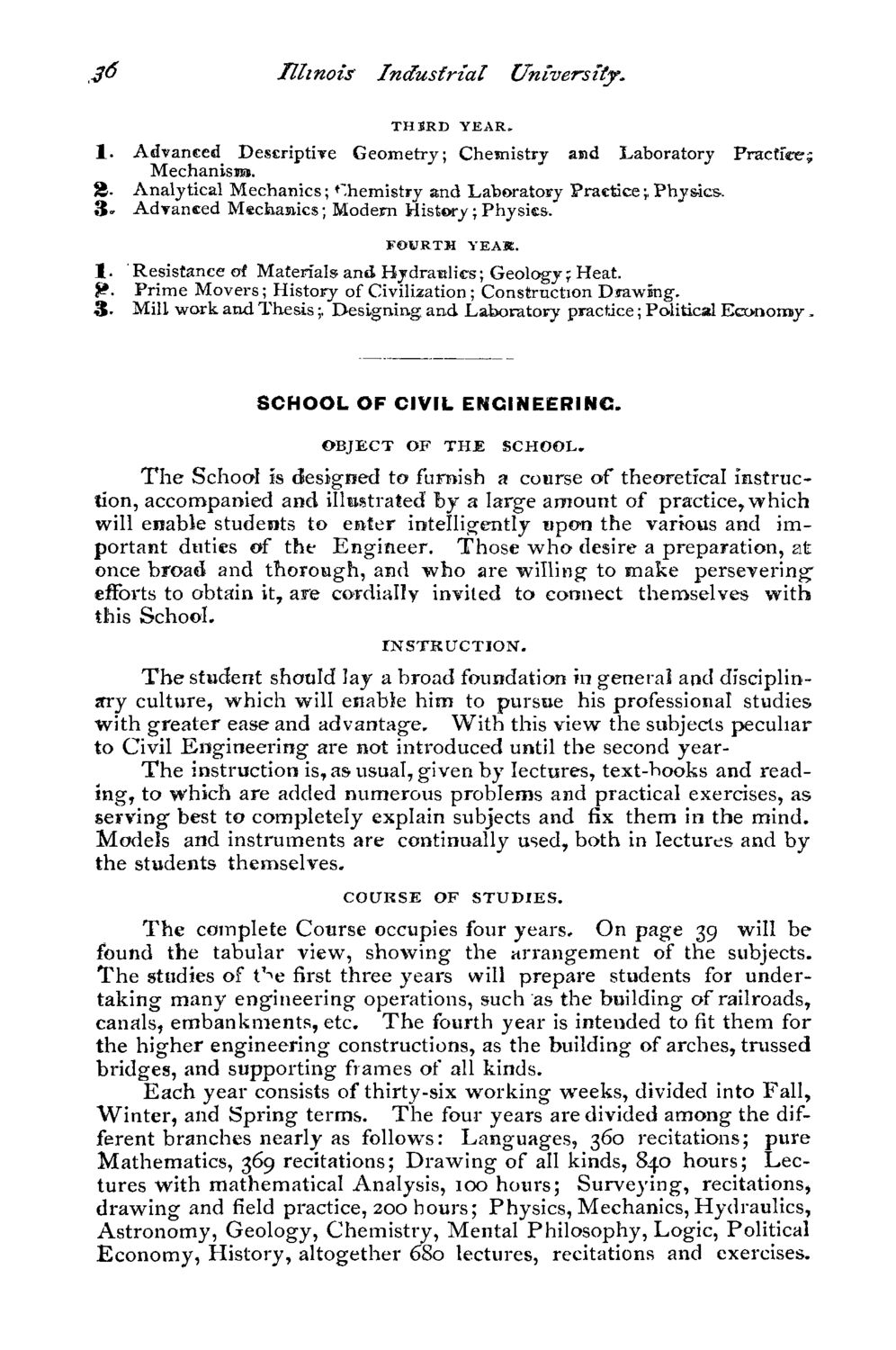| |
| |
Caption: Course Catalog - 1875-1876
This is a reduced-resolution page image for fast online browsing.

EXTRACTED TEXT FROM PAGE:
Illinois Industrial University. THSRD YEAR. 1. Advanced Descriptive Geometry; Chemistry and Laboratory Practice; Mechanisra. $}. Analytical Mechanics; Chemistry and Laboratory Practice;, Physics. 3 - Advanced Mechanics; Modem History; Physics. FOURTH YEAK. 1. • Resistance of Materials and Hydraulics; Geology; Heat. $». Prime Movers; History of Civilization; Construction Drawing. 3- Mill work and Thesis;, Designing and Laboratory practice; Political Economy. SCHOOL OF CIVIL ENGINEERING. OBJECT OF THE SCHOOL. The School is designed to furnish a course of theoretical instruction, accompanied and illustrated lby a large amount of practice, which will enable students to enter intelligently upon the various and important duties of the Engineer. Those who desire a preparation, at once broad and thorough, and who are willing to make persevering" efforts to obtain it, are cordially invited to connect themselves with this School. INSTRUCTION. The student should lay a broad foundation in general and disciplinary culture, which will enabie him to pursue his professional studies with greater ease and advantage. With this view the subjects peculiar to Civil Engineering are not introduced until the second yearThe instruction is, as visual, given by lectures, text-books and reading, to which are added numerous problems and practical exercises, as serving best to completely explain subjects and fix them in the mind. Models and instruments are continually used, both in lectures and by the students themselves. COURSE OF STUDIES. The complete Course occupies four years. On page 39 will be found the tabular view, showing the arrangement of the subjects. The studies of t'^e first three years will prepare students for undertaking many engineering operations, such as the building of railroads, canals, embankments, etc. The fourth year is intended to fit them for the higher engineering constructions, as the building of arches, trussed bridges, and supporting frames of all kinds. Each year consists of thirty-six working weeks, divided into Fall, Winter, and Spring terms. The four years are divided among the different branches nearly as follows: Languages, 360 recitations; pure Mathematics, 369 recitations; Drawing of all kinds, 840 hours; Lectures with mathematical Analysis, 100 hours; Surveying, recitations, drawing and field practice, 200 hours; Physics, Mechanics, Hydraulics, Astronomy, Geology, Chemistry, Mental Philosophy, Logic, Political Economy, History, altogether 6S0 lectures, recitations and exercises.
| |